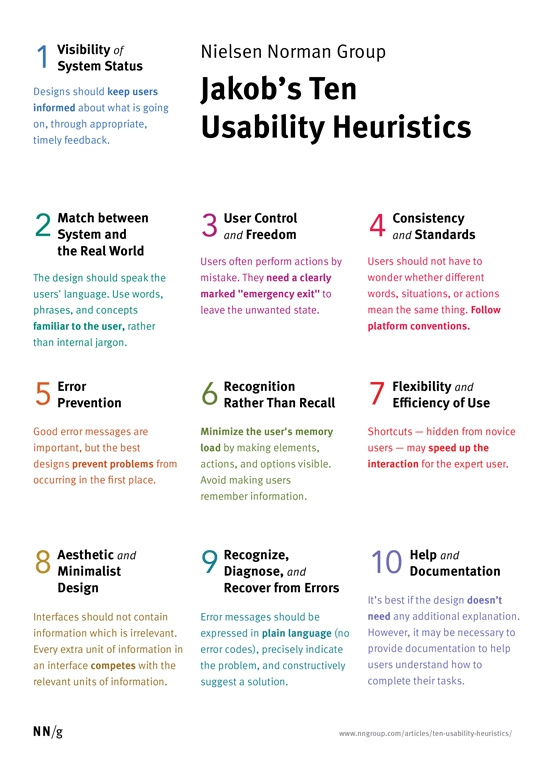Design principles, or design principles, are guidelines for the design of your product. They inspire and help in generating innovative ideas as well as choosing ideas.
In this article, you will learn what design principles are, what the benefits are and how to start drafting principles yourself.
To inspire you in advance, at Google they have 10 principles for (UX) design. These are based on Google's own philosophy and core values. The 10 design principles are:
Focus on people — their lives, their work, their dreams.
Every millisecond counts.
Simplicity is powerful.
Engage beginners and attract experts.
Dare to innovate.
Design for the world.
Plan for today’s and tomorrow’s business.
Delight the eye without distracting the mind.
Be worthy of people’s trust.
Add a human touch.
What are design principles?
Design principles describe your customer's (desired) user experience with your product. They are short but powerful statements.
They give direction to the design process. This is important and fine, because especially in creative processes where anything goes, it is smart to have a clear framework. We speak from experience (:
They help you make the right choices among all the good, not so good (read: bad) and great ideas you have. There might be multiple solutions to your problem. With the right design principles, you can better determine which solution is most appropriate.
Do you want to draft design principles yourself? View our step-by-step guide in the Toolkit. Prefer a little help on the principles? contact us! We will be happy to help you 🙂
You can use them when developing a new website, but also if you want to improve your existing site.
How it works. In a nutshell: You are going to generate as many ideas as possible for your design, and with the help of the design principles you choose the best ones; each idea is tested against the principles, so to speak.
Five advantages at a glance
Not yet convinced of the usefulness of design principles? After this summary, you probably will be! Design principles...
give direction to your design process;
inspire you when coming up with ideas for your product;
give the design team a clear and shared vision;
help you make decisions;
describe what you are doing it for: the meaning of your product for the customer.
The principles will help you achieve a distinctive and user-friendly product.
Voorbeeld: Government Digital Service design principles
The Government Digital Service design principles inspire and provide guidance, so that as a designer you know what the ground rules are.
On the Government Digital Service website, they explain each principle with examples. In this way, they make it very concrete and organisation-specific. Moreover, this way they are quickly accessible to everyone.
Start with needs
Do less
Design with data
Do the hard work to make it simple
Iterate. Then iterate again
Build for inclusion
Understand context
Build digital services, not websites
Be consistent, not uniform
Make things open: it makes things better

Drafting your own design principles, how?
You start drafting design principles as soon as you have done all your research and before you start designing, wireframing or even sketching. So how does that work?
You start from your company's core values and the user of your product. Practical user research helps you discover where your customer's wants and needs lie. What do your users want to do on your site or with your product? What makes them happy and what doesn't?
Translate this into personas and user scenarios. Who are you actually designing for? Get to know them!
What is your design challenge? An example of such a challenge is: 'Design a new website to entice people to check whether a bank does honest business'. It immediately describes a solution direction already.
Formulate 4 to 7 statements that respond concretely to people's experience on that website. How does it feel for that user to get to the site?
Design! Come up with as many ideas as you can for (the users of) your product and test them against your design principles. Easy as that 😉
Don't do it when establishing design principles
There are those pitfalls that you still like to fall into sometimes. With design principles, this is the case if you make them too general, too abstract or too obvious (who doesn't want that?).
For example, when you say your product should be user-friendly, what does that mean specifically for your product? Are you going to use big buttons, are you going to leave things out or does your product have to meet all 10 Nielsen Norman Group's heuristics?
Or if your principle is too obvious, too desirable say (for example: 'quickly accessible'), ask yourself how you get there and make your principle more concrete.

Do do when establishing design principles
Good design principles are unambiguous and focused on your product. They describe unique features, are based on user research results and are easy to remember.
You need 4 to 7 principles for your product. If you draw up more, then they are probably too detailed (or you want too much). And if you have fewer, then they are too abstract (or it is not clear what the features of your product are).
Compare HTC's design principles with Facebook's. (Don't worry, there is no 'right' or 'wrong'. The examples are purely for inspiration).
Design principles of HTC
Make it Mine: personalization needs to reache a level never before possible.
Stay Close: staying in touch with the people in your life means managing a variety of communication channels and applications.
Discover the Unexpected: many of the most memorable moments in your life are experienced, not explained.
Design principles van Facebook
Universal: our design needs to work for everyone, every culture, every language, every device, every stage of life.
Human: our voice and visual style stay in the background, behind people’s voices, people’s faces, and people’s expression.
Clean: our visual style is clean and understated.
Consistent: reduce, reuse, don’t redesign.
Useful: meant for repeated daily use.
Fast: faster experiences are more efficient and feel more effortless.
Transparent: we are clear and up front about what’s happening and why.
4 tips when using design principles
Make your principles visual to get them across the stage within the club. Write them on large brown sheets of paper and hang them up, make them into napkins and use them actively. Make sure they are constantly visible to everyone throughout the project and that you are reminded of them.
Look at your competitors' websites and run your principles by them! Are you distinctive enough?
Don't think of the design principles as a 'to do' on your list that you can quickly tick off after drafting the 1st version. Let them sink in for a while, walk around with them for a few days. Ask yourself if these are really them and if you can't formulate them more sharply.
Let the principles be read to people who know you as a company. When they read the principles, they should think, "This is your company" (or product).
Pretty tricky, but yet not
It is quite difficult to draw up really good design principles. Especially the level at which you describe them proves difficult in practice; that level between (too) general and (too) specific.
What we know for sure is that drafting design principles has many advantages and anyone can just get started. So it's not that hard! Get on with it and your product can only get better!
Are you inspired to get started yourself? Take a look at our practical step-by-step guide in the Toolkit. Or would you prefer a little help with the principles?" contact us! We will be happy to help you 🙂
Meld je aan voor onze nieuwsbrief en ontvang maandelijks praktische inzichten, tips en tricks om je op weg te helpen naar online groei!
Vul hieronder jouw e-mail in en ontvang direct een handig weetje 🙂
